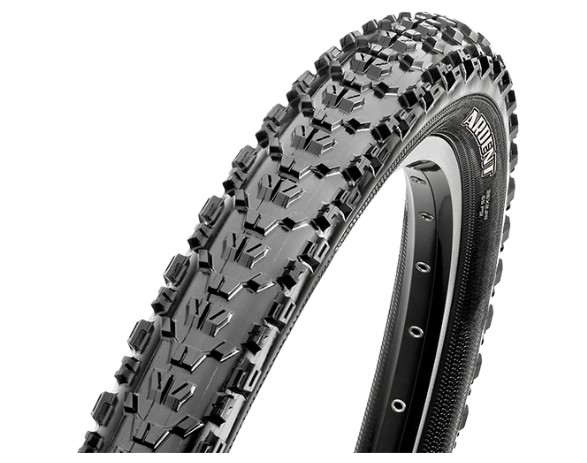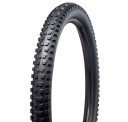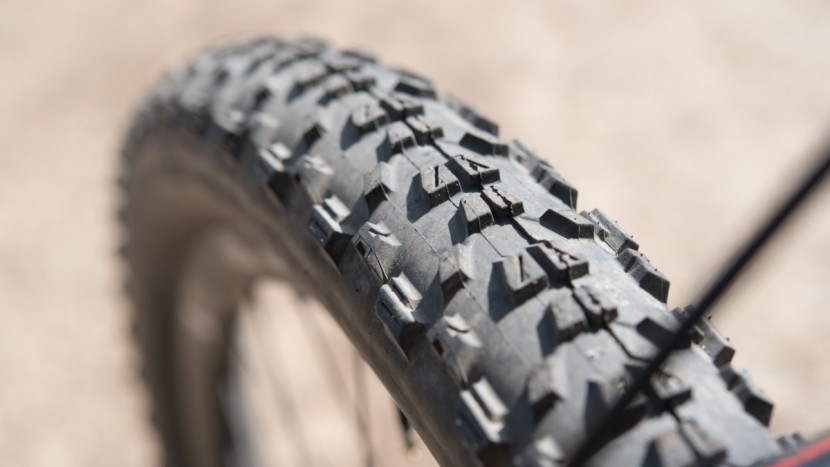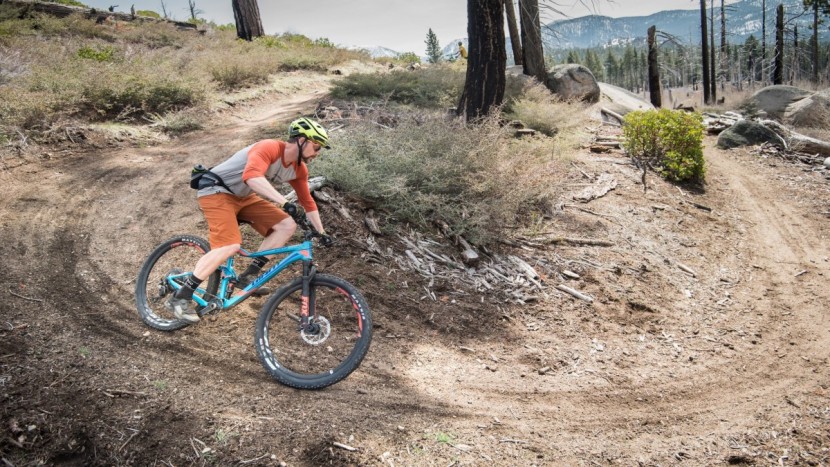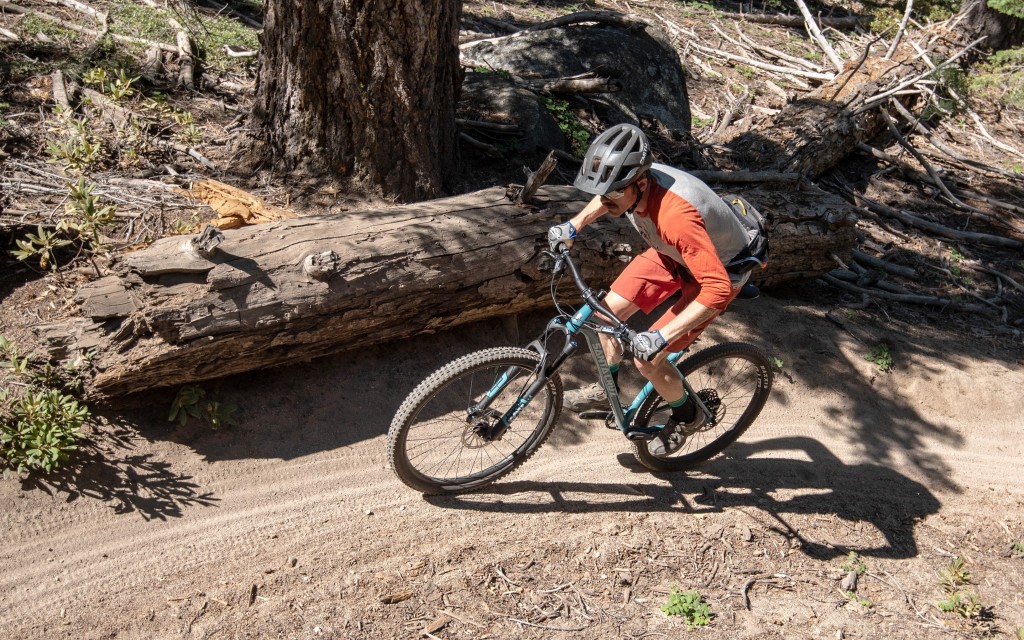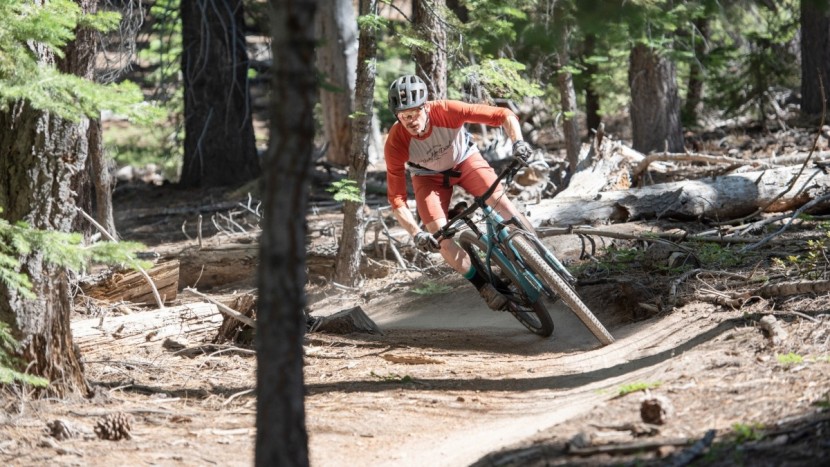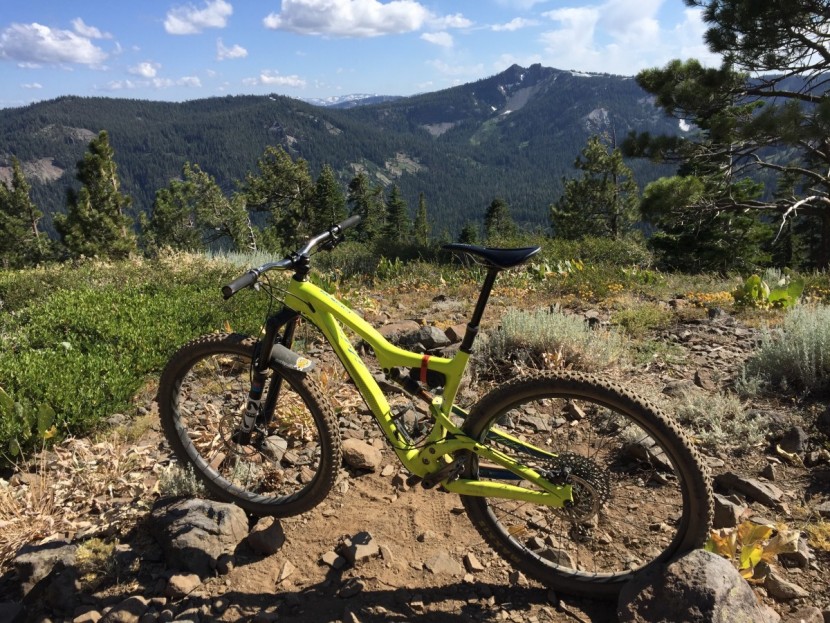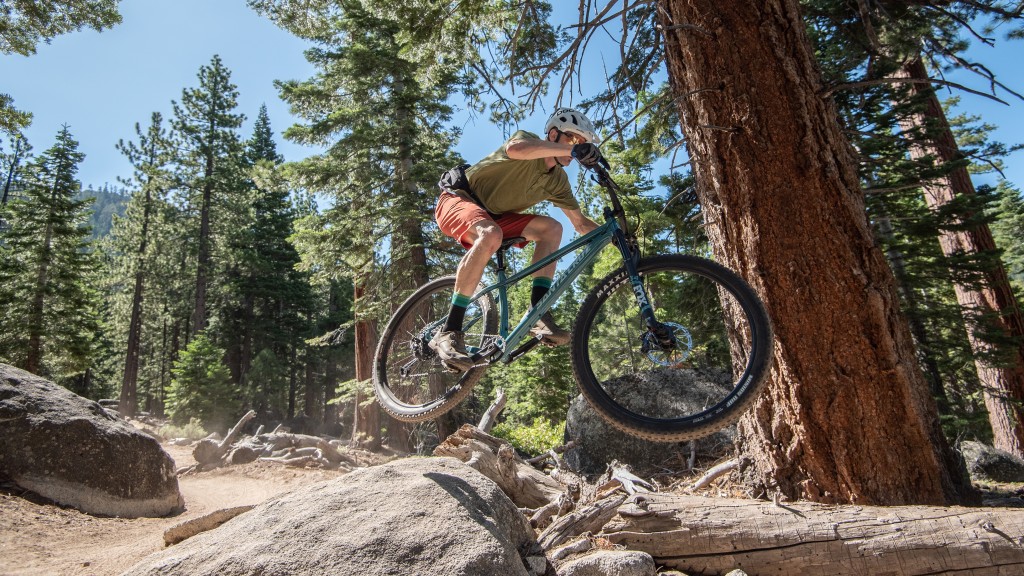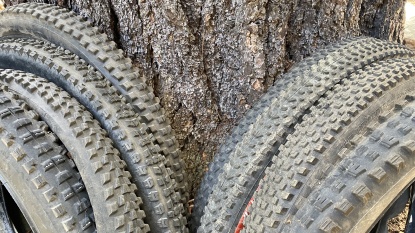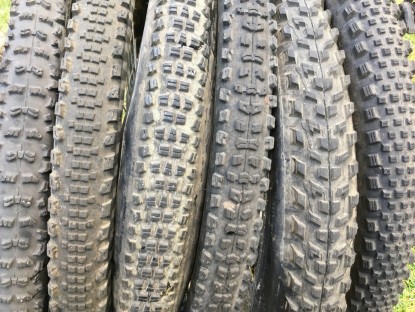Maxxis Ardent EXO Review
Our Verdict
Compare to Similar Products
 This Product
Maxxis Ardent EXO | |||||
|---|---|---|---|---|---|
| Awards | Best Overall Front Tire | Best Bang for the Buck Front Tire | Best Overall Rear Tire | Best Bang for the Buck Rear Tire | |
| Price | $70.99 at Amazon Compare at 2 sellers | $61.50 at Evo Compare at 4 sellers | $70 List $69.99 at Backcountry | $54.55 at Amazon Compare at 3 sellers | $69.99 at Evo Compare at 2 sellers |
Overall Score  |
|||||
| Star Rating | |||||
| Bottom Line | This fast roller is great on hard pack and works best for XC style trail riding | Step up your game and start leaving your friends in the dust | Same great value, but improved grip and performance with a new rubber compound | A killer rear tire that does it all well | A versatile semi-aggressive rear tire with well-rounded performance and a reasonable price |
| Rating Categories | Maxxis Ardent EXO | Maxxis Minion DHF 3... | Specialized Butcher... | Maxxis Aggressor 2.... | Specialized Elimina... |
| Cornering (25%) | |||||
| Pedaling Traction (20%) | |||||
| Braking Traction (20%) | |||||
| Rolling Resistance (15%) | |||||
| Longevity (15%) | |||||
| Installation (5%) | |||||
| Specifications | Maxxis Ardent EXO | Maxxis Minion DHF 3... | Specialized Butcher... | Maxxis Aggressor 2.... | Specialized Elimina... |
| Size tested | 29" x 2.4" | 29" x 2.5" WT | 29" x 2.6" | 29" x 2.5" WT | 29" x 2.3" |
| Weight as tested | 895g | 954g | 1123g | 950g | 945g |
| Front, Rear, or Both | Both | Front, Both | Front, Both | Rear | Rear |
| Casing Tested | EXO | EXO | GRID Trail | EXO | GRID Trail |
| Compound Tested | Dual | 3C Maxx Terra | Gripton T9 | Dual | Gripton T7 |
| Bead | Folding | Folding | Folding | Folding | Folding |
| Tread Count (TPI) | 60 | 60 | 60 | 60 | 60 |
Our Analysis and Test Results
The Ardent has been a mainstay in the Maxxis tire lineup for many years, and they bill it as “the do-it-all trail tire.” Our lead tester mounted a pair of them up for an XC race earlier this year and ended up leaving one on the rear of his bike for months while logging many hundreds of miles on this more XC-oriented trail riding tire. The Ardent is a departure from some of the more aggressive trail and enduro tires that are so popular these days. Its low profile tread and rounded profile make it a very fast-rolling option that we found excels on hardpack and firm conditions.
Cornering
The Ardent has a predictable cornering feel that works best on hardpack and other firm surfaces. You'll start noticing a trend here, and that is the performance of the Ardent is best in the right conditions. When ridden in the right conditions, this tire has a very smooth transition, ample traction, and an always on kind of cornering performance. Unlike some tires that have a super edgy or on/off feel in the corners, the Ardent hooks up as you transition to the side knobs and when you push hard into a corner.
The Ardent has a relatively round side to side profile, especially when compared to some of the more aggressive tires with squared-off shapes and super aggressive side knobs. This results in a very seamless feel when you start to lean the bike over into a turn, and thanks to some tread in the intermediate zone, there is no dead spot between the center and side knobs. It has a very natural and comfortable feel to it and doesn't require a super aggressive lean angle, though you can lean on it pretty hard on good dirt.
As mentioned above, the lower profile center and intermediate tread work best on conditions that aren't super loose. The side knobs are medium height and have an alternating sawtooth-like pattern with larger rectangular knobs and smaller H-shaped knobs in between. The outermost rectangular knobs have longitudinal sipes and stepped inside edges. The side knobs aren't nearly as aggressive as those found on the Minion DHF or the WTB Vigilante, but they are quite supportive despite not having as much of a locked-in feel. For riders who like a drifty feel, the Ardent can feel a bit drifty at times, especially if you come into a corner a little too hot.
The 2.4" width we tested has a somewhat bulbous appearance and loads of air volume. This allows you to run lower pressures to increase the contact patch and traction of the tire. In loose conditions, the shorter tread knobs and rounded profile of the Ardent give it a somewhat vague feel. Those who ride in super loose conditions regularly will benefit from a more aggressive tread that hooks up and tracks better.
Braking Traction
Again, the braking traction of the Ardent is great in the right conditions. The tread design works best on firm trail surfaces and slightly loose conditions where the relatively low-profile tread knobs and vertical braking surfaces can bite most effectively. Rock, compacted dirt, and even a little loose over hard surface conditions are where the Ardent performs the best when you apply the brakes.
The center and intermediate tread knobs all have vertical braking surfaces and squared-off edges that face perpendicular to the direction of travel and want to bite and dig in when the brakes are applied. Due to the low-medium height of all these knobs, they bite best on firm surfaces and loose soils that aren't too deep. Once it gets really loose, sandy, or really steep, the limitations of the lower profile tread become apparent, and the Ardent is easy to break into a skid and surf around. It is predictable and pretty obvious when the conditions aren't favorable for braking with the Ardent. If you ride super loose dirt regularly, you'll probably want to opt for something a bit more aggressive.
Pedal Traction
As with the cornering and braking traction of the Ardent, the pedaling traction is condition dependent. On firm surfaces like hardpack, compacted dirt, and solid rock, it hooks up well provides all of the traction you need. When conditions get loose, however, the limitations of the low profile tread become apparent.
The center tread knobs of the Ardent alternate in a 2-2 pattern with ramped and squared-off edges. The ramps help reduce rolling resistance, and the sharper squared edges aid in pedaling traction. The ramped knobs have diagonal sipes, which also help to grab onto the trail surface. The intermediate tread zone has one set of diagonal knobs for each set of two center tread knobs. These intermediate zone knobs have squared-off edges and work as an extra set of teeth to bit into the trail when pedaling. On firm trail surfaces of all kinds, this tread design works very well, and there is no lack of traction when climbing or when you lay down some power.
Loose conditions are another story. In sandy soils or blown out dirt, the Ardent struggles a little to find traction, especially when compared to tires that have more aggressive tread patterns. The pedaling traction in these situations isn't terrible, though if you frequently ride in loose conditions, you might be better off exploring tires with taller and more aggressive treads that work better. An example would be the Maxxis Minion DHR II, which has a much more substantial center tread that bites into loose soils more effectively.
Rolling Resistance
The Ardent's rolling resistance, or lack thereof, is one of its strongest suits. This tire rolls fast and noticeably so when compared to most of the more aggressive models in this review. The low profile tread, ramped knobs, and lightweight combine for an efficient and resistance-free roll down the trail.
Some of the Ardent's fast feeling comes from its impressively low weight. This tire weighed just 895 grams in the 29" x 2.4" size we tested, and that's with the more robust EXO casing. That is significant, and the reduction in rotational mass is noticeable when compared to the burlier and heavier models.
The tread pattern of the Ardent is the other reason it rolls so quickly. Unlike the semi-slick designs, the Ardent has a well-defined row of center tread knobs along the crown of the tire. The center tread is low profile with relatively tight spacing and ramped front edges. This design rolls as fast as any of the semi-slick models and way faster than all of the chunkier tread designs that have a more draggy feel to them.
Longevity
We wouldn't call the Ardent the most durable tire we've ever tested, but we've been pleasantly surprised by the longevity of this tire. Our test model features Maxxis' EXO casing that provides an extra layer of abrasion, cut, and puncture-resistant material added to the sidewall of the tire. Despite months of legitimate thrashing, chunky rock gardens, and poor line choices, we have yet to flat our test tire.
We tested the Ardent on both the front and back wheels, though the majority of our testing took place with it as a rear tire. Rear tires bear the brunt of the abuse both from impacts and the forces associated with braking, pedaling, and cornering, so it stands to reason that you're more likely to wear out the tread faster and/or flat the tire more easily. After heavy use, more than two months of riding this tire at least twice a week, there is obvious wear on the tread. The side knobs are eroding and pitting like any tire does after this much use. The center tread is holding up well, and we attribute that to the dual rubber compound that features a harder durometer rubber in the center and softer rubber on the cornering tread. That said, the tread still has some life in it, and we aren't going to retire this tire just yet.
Considering the lightweight of the Ardent, we assumed that it would be relatively easy to puncture or pinch-flat, but so far, we haven't had any issues. Despite numerous rim-outs and very healthy doses of sustained chunky rock gardens, the Ardent is still holding air. There are a few abrasions on the sidewalls that are finally starting to seep a little sealant, but it took a long time to get there. Don't get us wrong; this is no DH casing tire, but if you ride within its intended XC trail application, it will likely last a long time.
Installation
Like most Maxxis tires, we found the Ardent to be quite easy to install. In fact, we were able to get it on the rim and inflated with no tools and a standard floor pump. We didn't even need to use a tubeless booster. Of course, it takes a bit more effort to put a tire on this way, and using a pump with a booster or an air compressor makes it even easier.
Value
At retail, the Ardent is a reasonably priced mountain bike tire. As tire prices continue to creep upwards, sometimes reaching the $100 mark, we feel that the Ardent represents a solid value to the consumer seeking a lightweight, fast-rolling, high volume tire for hardpack conditions and less aggressive trail riding.
Conclusion
Depending on where and how you ride, the Ardent could be the ideal tire for you. If your trails are buff, your dirt is always good, and you aren't attacking the gnarliest terrain super aggressively, then we think you should give the Ardent a look. If your trail riding is more XC than enduro, or maybe you're even entering a local XC race, this fast-rolling, lightweight, and versatile tire is a great option to consider.
Other Versions
We tested the Ardent in a 29" x 2.4" size with EXO sidewall protection, TR (tubeless ready), and the dual rubber compound. In the 29" wheel size, it is also offered in a 2.25" width. In both widths, the Ardent can be found in a range of configurations, weights, single or dual rubber compounds, and either skinwall or black sidewalls (tested).
The Ardent is also available in 26" and 27.5" wheel sizes in both the 2.25" and 2.4" widths in the same configurations as the 29" wheel size.
Maxxis also makes a model called the Ardent Race, which has an even more tightly packed and lower profile tread for even more rolling efficiency for riders who spend time between the tape on XC race courses.

